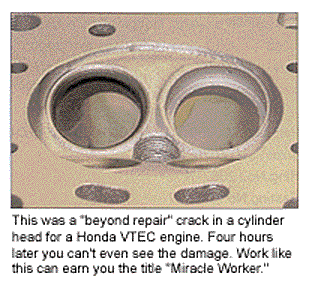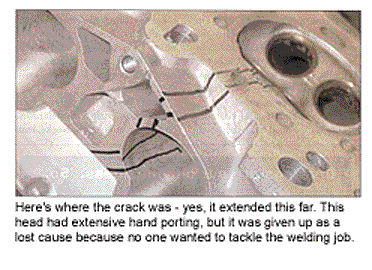Is there a machine in your shop that can be said to work magic? Not only can it fill cracks and repair broken castings, it has the power to create profits, restore power and turn back the hands of time. You might call it a TIG welder, but many of your most desperate customers will call it a miracle machine – especially at this time of year.
With March come several constants: spring rain, my birthday and the annual “March Madness.” No, not the NCAA basketball tournament – this one directly involves you; but like the Big Dance, this madness features hopes, heartbreak and unbelievable faith in last second miracles.
Like the famous groundhog Punxsutawney Phil, racers are starting to come out of hibernation, stick their heads out of their dens and look for the best time of the year – the start of race season. What? Groundhog Day is in February? Well, just like a groundhog that missed his wake-up call, many of your racing customers have waited too late to get started on their engines and are panicking – hoping that you’ll save them.

In some cases, it’s simply been too short an off-season spent saving for the newest and greatest components. Now the race motor has to be quickly weaned from the dyno room, put into the trailer and hauled off to the track.
There are too many types of competitive racing to list but I will suggest that they all have something in common: they all share the “oops factor.” Simply put, the “oops” moment is that point in time when the brand new combo that has had hours of modifications and trial and error either breaks on the dyno or on the track. Whether you’re watching the stopwatch, the E.T. clock or the horsepower gauge to see how your new creation will perform, when you identify the weak link, “oops” is NOT the word you’re likely to say – it’s just the only thing I can get away with. But I’m sure you know the feeling.
Even when the broken component seems like an inconsequential part of the puzzle, if it causes damage to an engine you’ll suddenly realize its importance.

Here’s the dilemma racers face: something broke, the season is upon us and every parts manufacturer is doing the best it can to keep shipping parts it hadn’t budgeted for. Now there may be an infamous 4 to 6 weeks before shipping.
Here’s the dilemma shops face: by the time the parts may be available, we’re all up to our ears in pressure from the customer who needs this replaced and worked on yesterday, even though it didn’t break until today. We are constantly faced with trying to be everything to everyone and keep all of our customers happy.
By now, you’re asking why I’m telling you this. After all, we live the scenario every year at this time, and there’s nothing new to think about it. Actually, maybe there is a new approach you can take to deal with engine casting emergencies.
I have spent most of the past four months on the road as a shop consultant, visiting customers all over the country. It seemed like everywhere I went, I found another shop in the midst of this “March madness,” all begging for a solution to their problems.
I can’t begin to tell you how many shop owners I visited who felt haunted by aluminum heads, blocks, manifolds and other components that had been damaged. Whether it was a NASCAR Busch Series head that was ported just a little too much or a custom race head that went “pow” on the last dyno pull or just some unexpected little gremlin in a sport compact performance head that reared its ugly face, things came to a screeching halt.
I wonder which came to a halt faster: the rotating crankshaft or the owner’s heartbeat while he contemplated how to minimize the expense and get the job rolling once again? In most cases these products had been CNC’d and hand-massaged to extract that final bit of power. Now all that custom work is worthless and wasted













